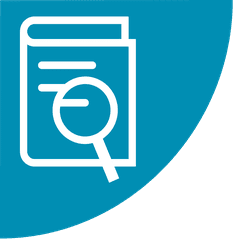NEWSWATCH
RECORDKEEPING AND REPORTING

National Academies Calls for “Smarter” OHS Surveillance
Occupational health and safety surveillance must be made a priority if it is to be used to guide public health actions and improve worker safety and health, according to a new report published by the National Academies of Sciences, Engineering, and Medicine. The National Academies’ Committee on Developing a Smarter National Surveillance System for Occupational Safety and Health in the 21st Century, which was formed in response to a request from NIOSH, the U.S. Bureau of Labor Statistics, and OSHA, identifies several short- and long-term recommendations for achieving a cohesive and “smarter” OHS surveillance system to protect the current and future work force. According to the committee, a robust system would provide reliable data for occupational injuries and illnesses to “inform policy development, guide educational and regulatory activities, develop safer technologies, and enable research and prevention strategies that serve and protect all workers.”
“Currently there is no single, comprehensive surveillance system in the U.S., but rather a continuously evolving set of systems using a variety of data sources that meet different objectives,” according to the press release announcing the new report. “So far, the principal focus has been on collecting data on health outcomes, and less attention has been given to collecting information on hazards and exposures.”
The committee recommends that NIOSH immediately form and lead a collaborative effort in partnership with OSHA, BLS, and other related agencies to establish and strengthen state-based occupational injury, illness, and exposure surveillance programs. NIOSH and OSHA should prioritize the development of a comprehensive approach for exposure surveillance, including building and updating a database of risks and exposures to help predict and locate work-related acute and chronic health conditions for prevention. The committee urges NIOSH to lead efforts to establish data standards and software tools for coding and using occupational data in electronic health records. The agency should also use advanced computational and analytical tools to monitor advances in information technology.
To better coordinate data collection on a national scale, the committee envisions a “system of systems”—a loose coupling of existing systems for collecting and analyzing OHS surveillance data. Such a system of systems was created in response to the 2009 influenza pandemic. During the pandemic, city and state surveillance programs reported to a central repository. This approach achieved surveillance coverage of more than half of all visits to hospital emergency rooms in the U.S., according to the report.
Other recommendations include developing plans to maximize the effectiveness and utility of OSHA’s new electronic reporting initiative for surveillance and establishing a coordinated strategy and mechanism for the timely dissemination of OHS surveillance information. The National Academies committee also urges BLS and OSHA to collaborate to improve injury and illness recording in the BLS Survey of Occupational Injuries and Illnesses, which does not currently include injuries to self-employed workers. According to the report, BLS and OSHA should work together to collect more complete and accurate information on the extent, distribution, and characteristics of occupational illnesses and injuries at the national and state levels.
The report is available for download as a PDF from the National Academies Press
website
. To learn more, read the National Academies’ press release
about the report.
ADVERTISEMENT
CLOSE

